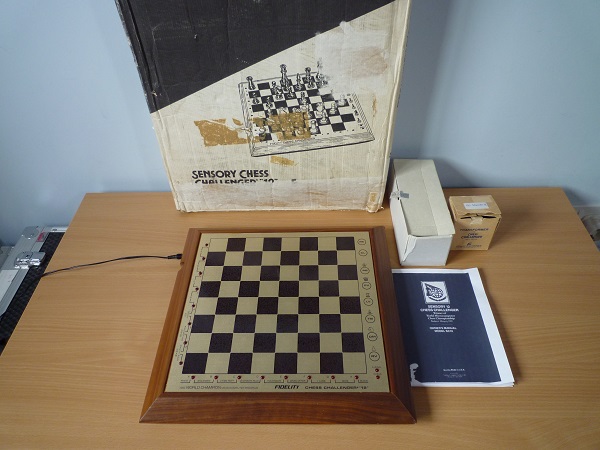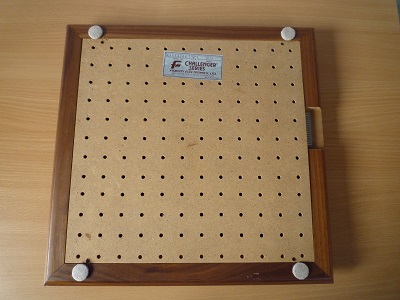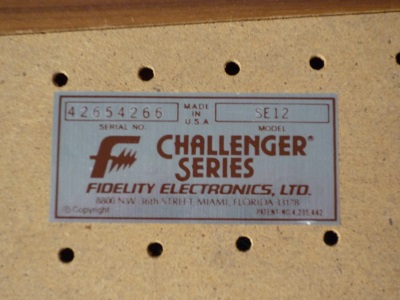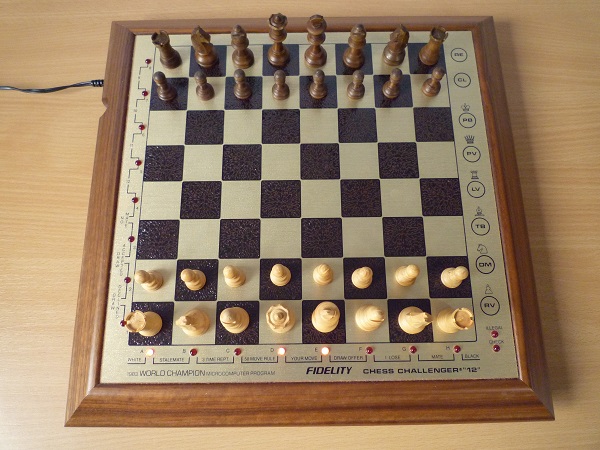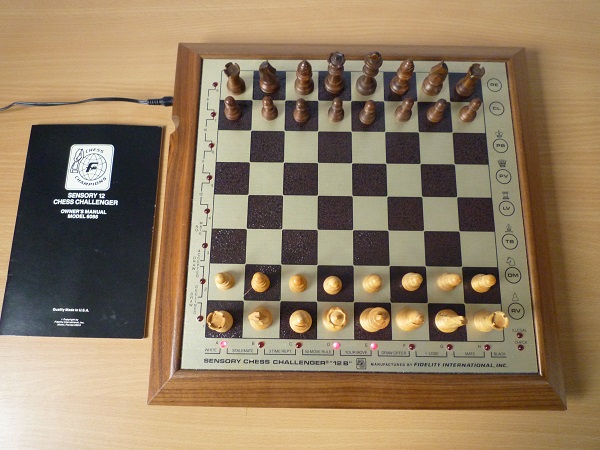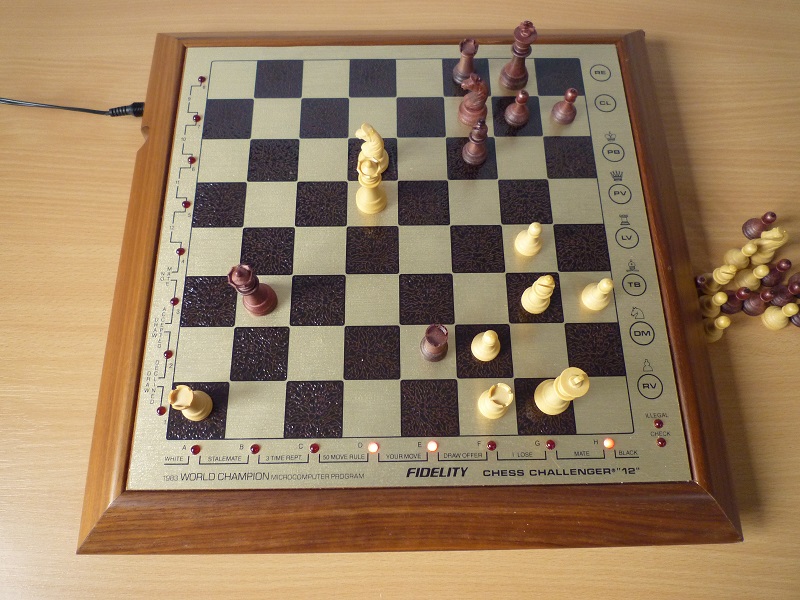
The first Fidelity Sensory 12 appeared in September 1984. It had Dan & Kathe Spracklen’s well known Budapest program running at 3 MHz and a Selective Search rating of 1681 Elo. Fidelity intended the Sensory 12 to compete directly with the Novag Constellation 3.6 on price and strength but with the added attraction of a wooden housing. Its features included an unusual metallic press sensory playing surface and a port for connection to a printer or modules such the CB9 and CB16 openings cartridges. This model had the designation SC12 on the manual and on the Serial Number sticker.
In its earlier days Fidelity had a tendency to upgrade its chess computer production on-the-fly with no public announcement. By 1983/4 Fidelity had seen the prospect of cashing in on upgraded models hence a sequence of minor model changes and special editions. Fidelity sometimes marketed these directly to the public much to the annoyance of the retailers.
The Fidelity Sensory SE12 (sometimes confusingly referred to as the 12C or even the SX-12C) was one such ‘special edition’ which arrived in December 1984. Basically the same as the SC12 but with the clock speed increased to 3.6 MHz, a slightly improved program version and, bizarrely, plastic chesspieces rather than wooden ones. This model is distinguished by an SE12 model number on the Serial Number sticker and a Sensory 12 E on the box. It appears that SE12s were offered to previous Fidelity buyers via direct mailing, but few were sold so the model you see on this webpage is relatively rare today.
The SE12 uses a 6502B processor running at 3.6 MHz clock speed, there is 20KB of program ROM, 4KB RAM and a 3,000 position opening book.
Very soon after the SE12 was released the 12B, or model 6086, arrived. This was a more significant upgrade of the Sensory 12 with what is believed to be a stronger program and a 4 MHz clock speed (according to my 12B manual). It also featured wooden pieces again.The chess board is labelled “Sensory Chess Challenger 12B”. Previous reference to the 1983 World Champion Microcomputer program which appears on the SC12 and SE12 is absent on the 12B. In 1985, in the rapidly moving world of chess computers you did not want any reference to a 1983 program, however good. Even the 12B has two cosmetically different versions. Some 12Bs have a black stripe along the bottom of the chessboard (see one of the photos below).
Lastly there is model SX12, released around March 1985, which runs at 5 MHz and is probably the rarest version. I have not seen this one but reference can be made to Hein Veldhuis’s database for details (link).
Summary
Sensory 12 - Model SC12 - 3 MHz, Budapest program, wood pieces
Sensory 12 - Model SE12 - 3.6 MHz, improved Budapest program, plastic pieces
Sensory 12B - Model 6086 - 4 MHz, improved program, wood pieces (black stripe and no black stripe versions)
Sensory 5.0? - Model SX12 - 5 MHz, improved Budapest program, wood pieces
